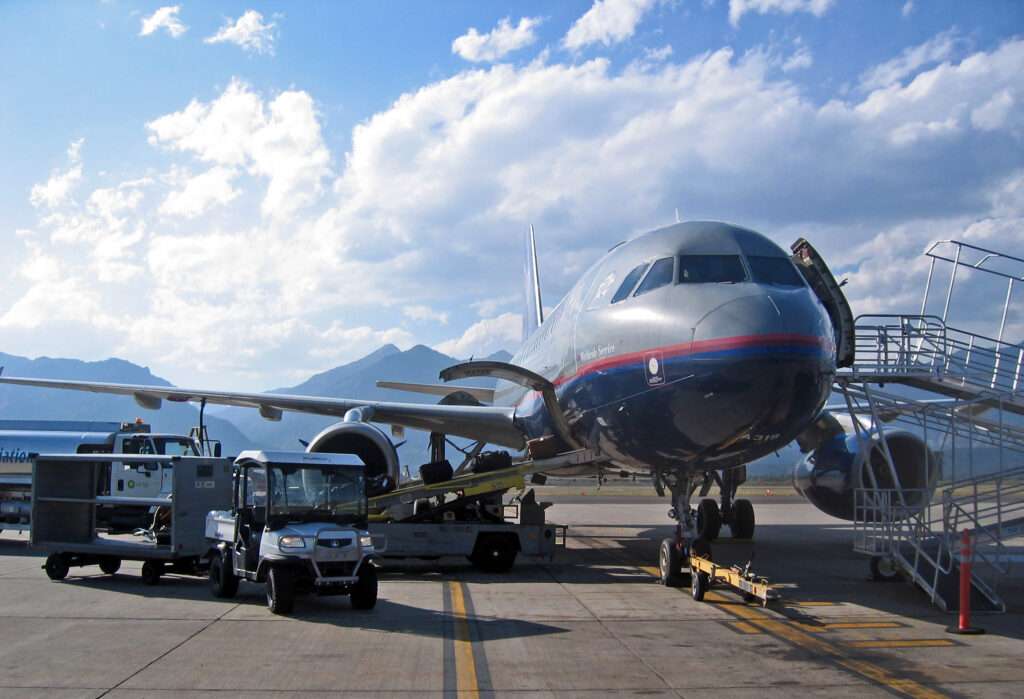Jackson Hole Airport (JAC) boasts a unique story – nestled amidst the majestic peaks of Grand Teton National Park, it’s the only commercial airport entirely within a national park boundary in the United States.
Its history is a fascinating interplay between development, tourism, and environmental protection, reflecting the evolving relationship between humanity and this awe-inspiring landscape.
A Pioneering Landing Strip in the 1930s
The dream of air travel reaching Jackson Hole began in the 1930s.
Recognizing the area’s potential as a tourist destination, the Town of Jackson identified a suitable location for an airport.
The chosen site, strategically placed in the valley floor, would become the foundation for JAC.
Commercial air service arrived in 1941 with Western Airlines offering the first flights.
This marked a turning point for Jackson Hole, making it more accessible to visitors from across the country.
However, a significant development soon cast a long shadow.
National Monument Status and Balancing Growth (1940s-1970s)
In 1943, a large swathe of land encompassing the airport was declared Grand Teton National Monument.
This decision, while recognizing the area’s natural beauty, also created a complex situation.
The airport, now situated within a protected area, had to reconcile its operations with the mission of the National Park Service (NPS).
Balancing tourism needs with environmental concerns became a central theme. The 1950s saw the monument’s incorporation into Grand Teton National Park.
Despite commercial flights continuing, tensions arose regarding potential expansion.
Proposals in the 1960s and 1970s to extend the runway to accommodate larger jets were met with strong opposition from the NPS due to noise concerns.
A Compromise and a Log Cabin Terminal
A turning point came in 1968 with the formation of the Jackson Hole Airport Board, a joint entity representing the Town of Jackson and Teton County.

This formalized the airport’s management structure and fostered collaboration with the NPS.
Throughout this period, the airport’s terminal was a unique sight. Resembling a pioneer log cabin, it embodied the area’s rustic charm.
However, by the late 20th century, it became clear that a more modern facility was needed.
A New Era: Balancing Needs and Awards (2000s-Present)
The 21st century ushered in a new era for JAC.
Recognizing the need for a balance between growth and environmental sensitivity, the airport embarked on a major redevelopment project.
A key aspect of this initiative was the complete reconstruction of the terminal between 2009 and 2014.
The NPS, true to its commitment to preserving the park’s aesthetics, imposed a height restriction of 18 feet on the new structure.
The resulting design, created by Gensler, is a testament to innovation.

The terminal seamlessly blends with its surroundings. Exposed wood, fireplaces, and nature photography throughout the building create a contemporary yet rustic ambiance.
This visionary design not only addressed practical needs but also earned the project an American Institute of Architects Honor Award in 2014.
The commitment to environmental responsibility extends beyond aesthetics.
JAC actively pursues sustainability initiatives like using energy-efficient lighting and promoting recycling programs.
The airport also maintains a limited noise policy, restricting the use of louder, older-generation jets.
This ensures that the majestic soundscape of the Tetons remains a defining characteristic for arriving visitors.
Looking Ahead: A Gateway to Adventure
Today, Jackson Hole Airport stands as a vital gateway to Grand Teton National Park and the surrounding Jackson Hole area.
It thrives on a carefully managed balance – catering to tourism while safeguarding the natural splendor that attracts visitors in the first place.
As Jackson Hole continues to evolve as a popular tourist destination, JAC will undoubtedly play a crucial role.

The airport’s future likely involves ongoing advancements in technology and infrastructure, all done with the aim of ensuring a seamless and environmentally responsible visitor experience.
The story of Jackson Hole Airport is far from over.
It remains a testament to the ongoing dialogue between progress and preservation, ensuring that the wonder of Grand Teton National Park is accessible to generations to come.

Click the banner to subscribe to our weekly newsleter.

Click the photo to join our WhatsApp channel so then you can stay up to date with everything going on in the aviation industry!









